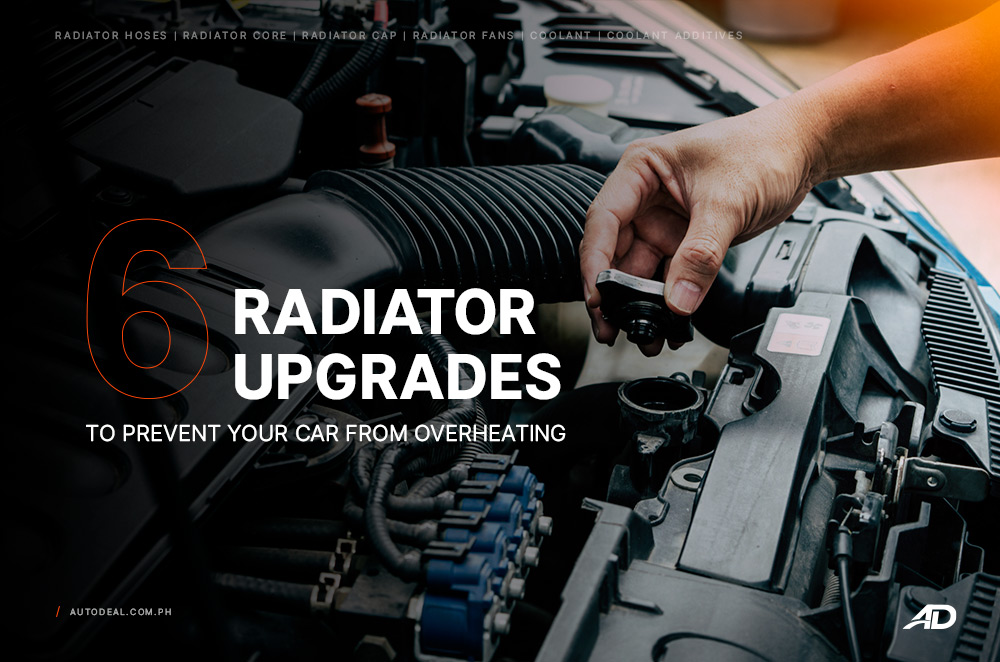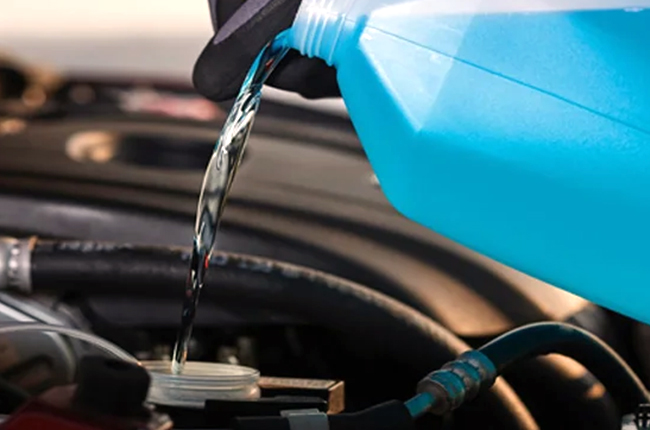
Your car’s radiator is one of the key components that help keep the engine cool and running smoothly. Without it, the engine will overheat and can cause some serious damage to the internals of the motor. With that in mind, here are six upgrades that you can do in order to prevent your vehicle from overheating. It is important to note that your vehicle’s stock cooling system is enough to keep the engine from overheating even during a hot summer’s day. Only upgrade these components if you plan on making more power or tuning your engine beyond the factory specifications.
Before you upgrade
If you are experiencing cooling problems even with a completely stock vehicle, it’s best to first find out what is causing these issues. Upgrading immediately may temporarily hide more serious underlying issues that your vehicle already has. Make sure that your vehicle does not have any other issues like broken gaskets, broken seals, broken fans, or even leaks before considering upgrades. This will ensure that your vehicle’s cooling system is healthy before you add more parts. Make sure to also have your radiator cleaned for optimized cooling, as dirt and debris could be stuck on the fins of the radiator that help dissipate the heat. Give the radiator a gentle cleaning once in a while to allow for more efficient cooling. With that said, here are the six upgrades that can prevent your vehicle from overheating.
Radiator hoses

One way you can help keep your engine cool is by changing out your rubber radiator hoses to silicone ones. These not only come in many different colors but are also easier to remove, can better withstand higher engine temperatures, are more durable and less likely to crack, and are also a good bang for the buck upgrade. If you want a great and affordable semi-future-proof solution to aid with your cooling problems, then silicone hoses are a great upgrade to start with, as they will not only last longer but can also add some visual appeal to your engine bay.
Radiator cores

When it comes to cooling, the surface area is the name of the game. The more surface area you have, the better your cooling capabilities are. Having more surface area allows cool air to come in contact with the radiator fins, enabling a better exchange of heat. Replacing your radiator with one that has more “cores” or “rows” will improve said heat exchange. However, you might also want to pair this upgrade with a new set of radiator fans to further enhance the cooling. A radiator with more cores will be thicker than the regular one. This means that the cores at the back may not be receiving the same cooling potential as the ones at the front. Upgrading your radiator fans will help with this problem especially while in traffic. At higher speeds, however, the airflow will be more than enough to maximize the cooling potential of a radiator with more cores. This upgrade is ideal if you plan on running your vehicle at higher revolutions per minute (RPMs), and need a better cooling performance to keep things in check.
Radiator cap

Another upgrade to aid with cooling is a high-pressure radiator cap. It is important to note, however, that upgrading your radiator cap will not directly solve your overheating problems. Instead, radiator caps aid with raising the boiling point of your coolant or water that you are using in your engine. These caps also help protect the cooling system from boiling over at the top of the operating temperature range. Radiator caps are an ideal modification if you are running a highly modified engine that is producing more heat than stock. If your engine is still in its stock form, there is no need to upgrade to a higher pressure radiator cap.
Radiator fans

Another helpful upgrade you can do to your car’s cooling system is by upgrading your radiator fans. This lets the vehicle push or pull more air into the radiator to further aid with cooling. These are especially useful during traffic situations, as airflow at lower speeds is at the minimum. To further aid with cooling, we also recommend adding a new radiator fan shroud to your fan upgrades as well. This lets the airflow faster through the radiator, however, make sure that there is enough room to also let air pass at higher speeds. However, a shroud can work as a double-edged sword at higher speeds, as it can restrict the air flowing through the radiator as well. In order to maximize your cooling upgrade results, find the right fan and shroud combo for your intended purpose. Bigger fans may not always deliver the best results, so find which one best suits your needs and your vehicle.
Coolant

While distilled water is better at dissipating heat than coolant, water is corrosive and can easily wear your seals over time. What coolant brings to the table is added protection and lubrication for your cooling system components. It also comes with the option of a much lower boiling point than regular distilled water. Make sure, however, to flush your cooling system completely when switching to a different coolant. This will prevent remnants of the old coolant from mixing in with the new one. Mixing coolants may result in gelling and may clog the tubes found in the radiator. This will lower the radiator’s cooling capabilities and may, in the long run, damage other components.
Coolant additives

If you want to further enhance your coolant’s performance, you can also consider coolant additives. These help with corrosion control, and for temperate countries, helps the coolant from freezing over. While it doesn’t apply to a tropical country like the Philippines, additives that help protect your cooling system are more than welcome. Aside from corrosion control, additives can also help reduce engine temperatures.
A regular car engine will also have a “sweet spot” or optimal operating temperature, where it produces the maximum amount of power efficiently. Excessive heat reduces its efficiency, lowering the power the motor can deliver. It can also cause metal parts to expand too much causing unwanted wear. Coolant additives step in by reducing the surface tension of the coolant to allow it to absorb and transfer heat more efficiently. These also often come with surfactants that hold the surface tension of bubbles together long before they burst. This reduces the amount of air that will accumulate in the cooling system, thus keeping things as efficient as possible. Bubbles in your cooling system will reduce the effectiveness of the coolant or water being used to properly transfer the heat into the air via the radiator fins. This upgrade is ideal for those who want to make the most out of the coolant they already have in their vehicle. Make sure to properly follow the instructions found on the coolant additive, as misapplication may lead to harmful effects to the cooling system later on.
Latest Features
-
The 6 things every Ford Ranger must pass before it leaves the factory / Featured Article
Every Ford Ranger, from the base model to the Ranger Raptor, goes through a full inspection process before it leaves the factory. This includes six steps that make sure it’s ready to drive a...
-
Which GAC AION EV is best for your everyday lifestyle? / Featured Article
The GAC AION lineup has something for everyone, maybe you're after space, speed, or just a smooth city drive. Here's a quick breakdown of which model might work best for your day-to-day life...
-
The AutoDeal Awards 2024: Celebrating excellence in the auto Industry / Featured Article
The AutoDeal Awards 2024: Celebrating excellence in the auto Industry
Popular Articles
-
Cheapest cars under P700,000 in the Philippines
Jerome Tresvalles · Sep 02, 2024
-
First car or next car, the Ford EcoSport is a tough package to beat
Jun 18, 2021
-
Car Maintenance checklist and guide – here’s everything you need to know
Earl Lee · Jan 12, 2021
-
Most fuel efficient family cars in the Philippines
Bryan Aaron Rivera · Nov 27, 2020
-
2021 Geely Okavango — Everything you need to know
Joey Deriquito · Nov 19, 2020
-
Family cars in the Philippines with the biggest trunks
Sep 20, 2023
-
Head to head: Toyota Rush vs. Suzuki XL7
Joey Deriquito · Oct 28, 2020
-
Why oil changes are important for your car
Earl Lee · Nov 10, 2020
-
2021 Kia Stonic — What you need to know about it
Joey Deriquito · Oct 16, 2020
-
Top 7 tips for buying a used car in the Philippines
Joey Deriquito · Nov 26, 2020



